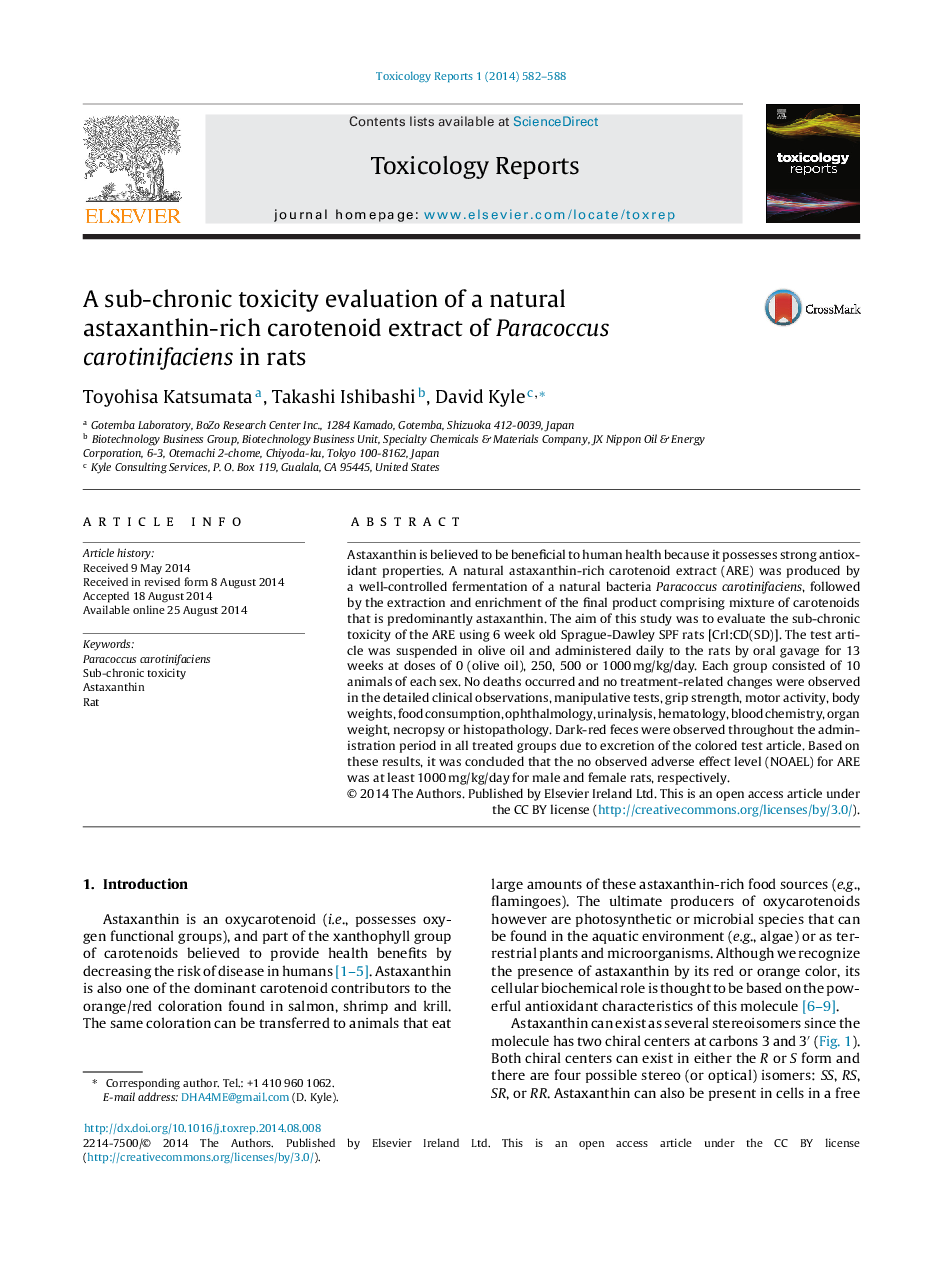| Article ID | Journal | Published Year | Pages | File Type |
|---|---|---|---|---|
| 2572345 | Toxicology Reports | 2014 | 7 Pages |
Astaxanthin is believed to be beneficial to human health because it possesses strong antioxidant properties. A natural astaxanthin-rich carotenoid extract (ARE) was produced by a well-controlled fermentation of a natural bacteria Paracoccus carotinifaciens, followed by the extraction and enrichment of the final product comprising mixture of carotenoids that is predominantly astaxanthin. The aim of this study was to evaluate the sub-chronic toxicity of the ARE using 6 week old Sprague-Dawley SPF rats [Crl:CD(SD)]. The test article was suspended in olive oil and administered daily to the rats by oral gavage for 13 weeks at doses of 0 (olive oil), 250, 500 or 1000 mg/kg/day. Each group consisted of 10 animals of each sex. No deaths occurred and no treatment-related changes were observed in the detailed clinical observations, manipulative tests, grip strength, motor activity, body weights, food consumption, ophthalmology, urinalysis, hematology, blood chemistry, organ weight, necropsy or histopathology. Dark-red feces were observed throughout the administration period in all treated groups due to excretion of the colored test article. Based on these results, it was concluded that the no observed adverse effect level (NOAEL) for ARE was at least 1000 mg/kg/day for male and female rats, respectively.
